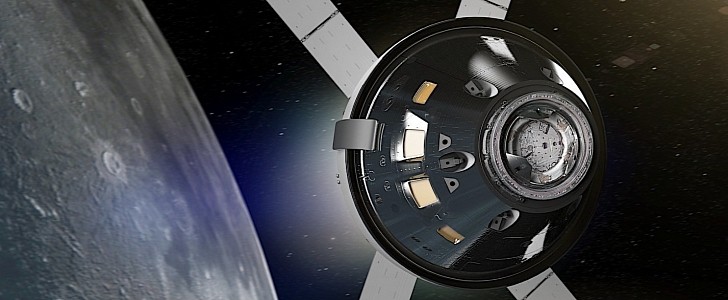Orion is the name of the spacecraft NASA will be using to take people to the Moon and back as part of the Artemis program. The first test flight of the thing, together with the Space Launch System rocket, is scheduled for later this year, and the last one at least as far into the future as 2032.
That’s what NASA revealed this week, when it announced the name of the company it selected to make the main engine for the future incarnations of the ship (Orion Main Engine, OME): Aerojet Rocketdyne, a company that has been involved in space exploration and defense for years.
Aerojet will be tasked with making the OME (design, production, and special studies and tasks) for the Orion ships that will be used in Artemis missions. The contract is a single-award, indefinite-delivery/indefinite-quantity deal with firm-fixed-price orders, and it is worth $600 million.
For the first missions, the Orion will use the so-called European Service Module, which acts as the spaceship’s primary power and propulsion hardware. It comprises the main engine of the ship, a repurposed space shuttle unit named Orbital Maneuvering System (OMS), and 24 smaller engines grouped into six pods.
From Artemis missions VII through XIV, NASA will replace the shuttle-based Orbital Maneuvering System engine with the new hardware Aerojet Rocketdyne was tapped to develop.
“The OME will be integrated into Orion’s primary power and propulsion component, the European Service Module, and will replace the Orbital Maneuvering System Engine repurposed from the Space Shuttle Program for the service module on Artemis missions VII through XIV,” the American space agency said in a statement.
“The contract also will allow for the procurement of additional engines for other NASA exploration programs.”
At the time of writing, the exact specs of the new engine are not known, but they should be at least on par with what the OMS currently offers. That would be 5,778 pounds of force, and the ability to swivel from side to side as well as up and down.
Aerojet will be tasked with making the OME (design, production, and special studies and tasks) for the Orion ships that will be used in Artemis missions. The contract is a single-award, indefinite-delivery/indefinite-quantity deal with firm-fixed-price orders, and it is worth $600 million.
For the first missions, the Orion will use the so-called European Service Module, which acts as the spaceship’s primary power and propulsion hardware. It comprises the main engine of the ship, a repurposed space shuttle unit named Orbital Maneuvering System (OMS), and 24 smaller engines grouped into six pods.
From Artemis missions VII through XIV, NASA will replace the shuttle-based Orbital Maneuvering System engine with the new hardware Aerojet Rocketdyne was tapped to develop.
“The OME will be integrated into Orion’s primary power and propulsion component, the European Service Module, and will replace the Orbital Maneuvering System Engine repurposed from the Space Shuttle Program for the service module on Artemis missions VII through XIV,” the American space agency said in a statement.
“The contract also will allow for the procurement of additional engines for other NASA exploration programs.”
At the time of writing, the exact specs of the new engine are not known, but they should be at least on par with what the OMS currently offers. That would be 5,778 pounds of force, and the ability to swivel from side to side as well as up and down.






